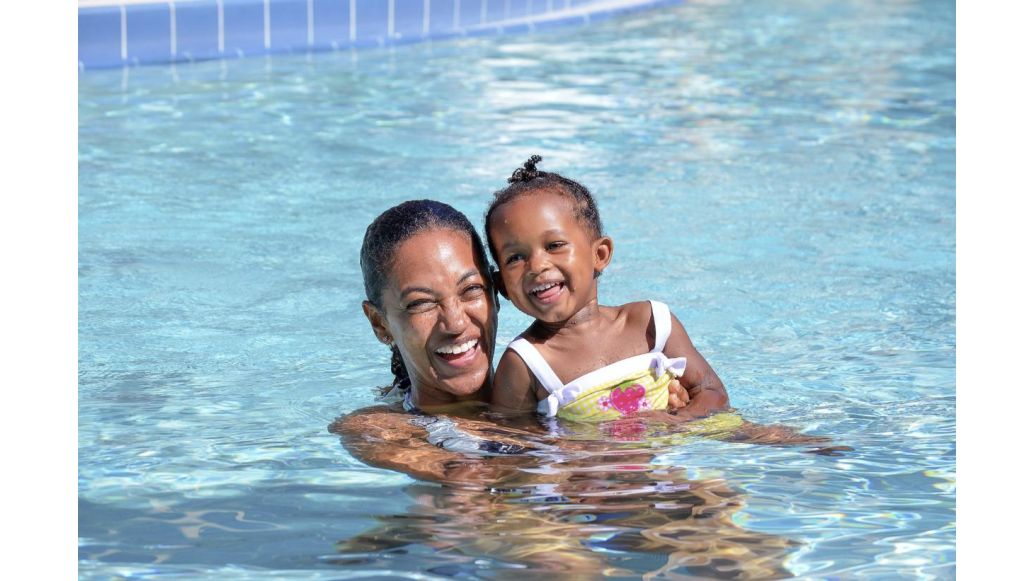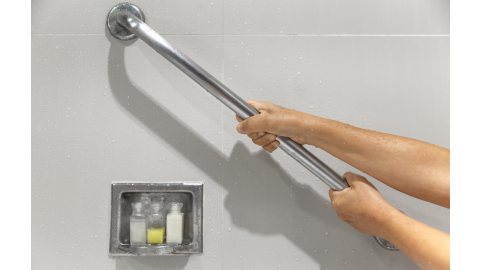The most important reason to teach your child to swim is to help keep them safe. The American Academy of Pediatrics states that the likelihood of childhood drowning deaths are reduced by 88% through participation in formal swim lessons. You can reinforce these lessons while playing in the pool. Swimming is also great exercise and can help keep your child healthy.
Drowning is the 2nd leading cause of death in children ages 1-4, after birth defects.1
Learning to swim won’t make your child “drown-proof” but along with other safety measures, it can reduce their risk of drowning.
What age should I start teaching my child to swim?
Recent studies show that parent-child swim lessons can reduce the risk of drowning for children 1-4 years old. The American Academy of Pediatrics says that by 4 years of age, most children are ready for basic swim lessons (floating, treading water, etc.) and by 5-6 years old children can learn how to swim the front crawl (freestyle) stroke.
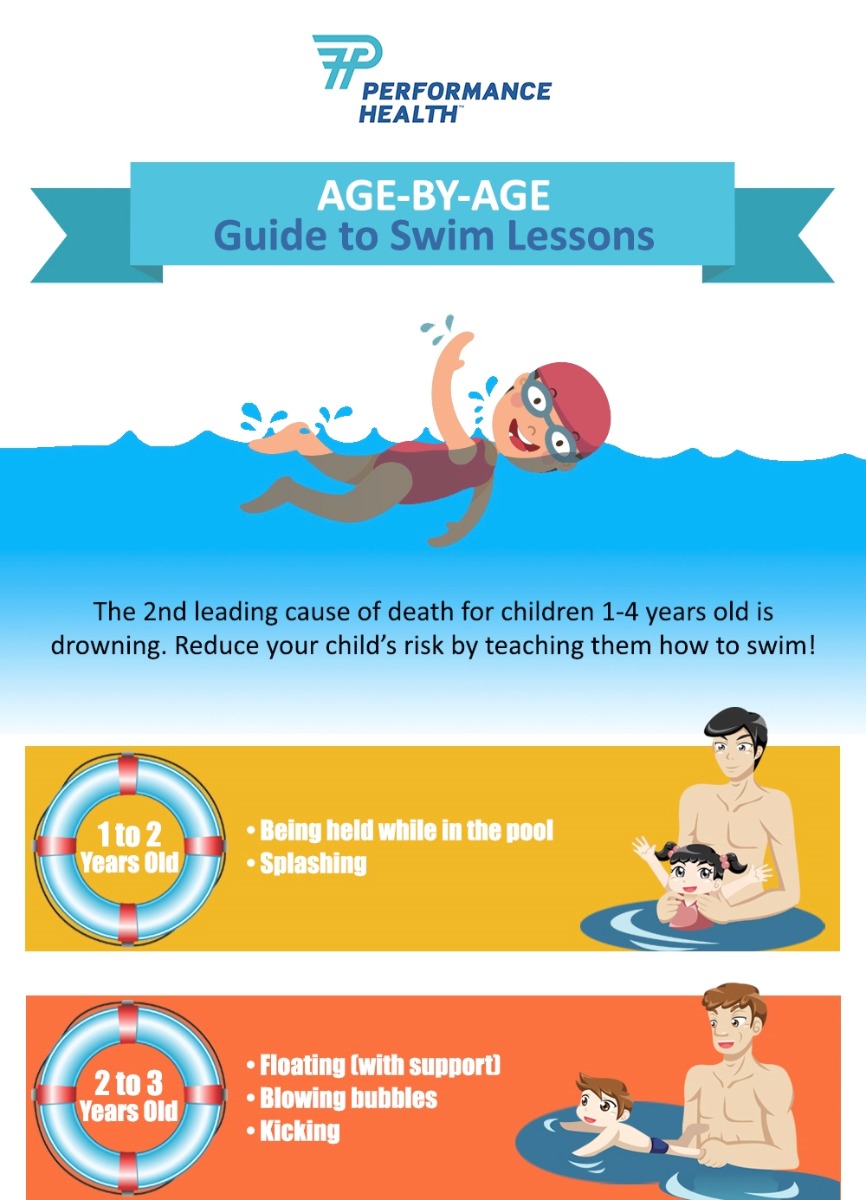
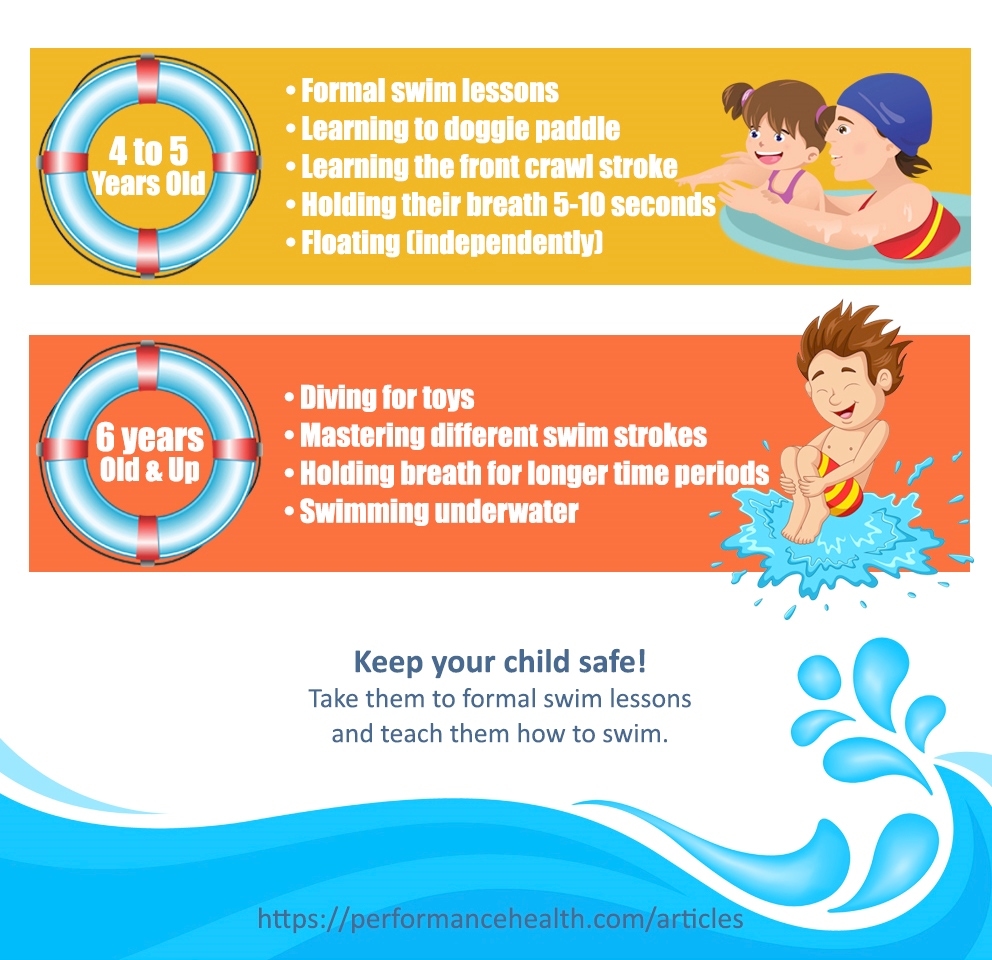
Swimming Skills to Teach Your Child by Age
|
|
How to Teach Freestyle (Front Crawl) Swimming Style
- Start with kicking.
- Add in the arms.
- Teach your child when and how to breathe while swimming.
- Don’t forget, learning to swim takes time and lots of practice.
Begin teaching your child how to swim by teaching them how to kick. Start with your child sitting on the highest step of the pool’s stairs, with their legs extended in front of them. Gently hold their ankles and move them up and down, demonstrating how they should kick. Let them try it. Then move to the side of the pool and have your child hold on and kick.
If the pool doesn’t have an edge that’s easy to grasp, your child can use a kickboard instead. This also helps show them that kicking lets them move in the water. Another great option is a noodle. It can be used used under your child’s body to help them practice balance and laying horizontally.
When your child is comfortable with kicking, have them hold your hands and stretch out horizontally on their stomach. Move backwards as they kick and remind them to keep their legs straight. Encourage them to reach their arms out straight too. Once your child is ready, have them blow bubbles in the water during this exercise, stopping to take a breath as needed.
Teach your child how to use their arms while swimming. Start with your child just standing in the water and moving their arms in circles to get used to the motion. Show them how to keep their hands cupped to pull more water. Then have your child lay on their stomach and hold on to a step/swim bar with one arm. Help them move their other arm from an extended position down toward their knees and back around. Practice with both arms.
Next, have your child lay on their stomach while holding your hands, arms extended. Let go of one hand at a time as they practice the arm circle movement. After they become comfortable, encourage them to kick at the same time. Then move to hold their waist and let your child kick and move their arms at the same time. Walk beside them as they practice swimming. Finally, let them swim to you independently for short distances.
This can be the most challenging step to teach. Many children will stand up or want to be held while taking a breath. Others don’t want to get their faces wet. Practice blowing bubbles in the water or getting their face wet under the shower spray first.
Ready to begin? Start by having your child swim while holding them at the waist. Every 3-5 strokes, tilt your child so their head comes out of the water and say “breathe”. Once your child learns to lift their head, let them try it independently while you continue to hold their waist. Then, have your child try it while swimming to you. They may need to “doggie paddle” if breathing takes a long time. Encourage them by reminding them to “breathe” and “keep swimming” (instead of standing up while taking a breath).
After they master this skill, you can work on taking breaths on the side. Ask your child to stand in the pool and blow bubbles with their face in the water while looking down. Tell them to turn their head to the side when they need to breath and take a breath (half of their face should stay submerged).
When your child is ready, you can move on to breathing from the side while swimming. Tell your child to rest their ear on their outstretched arm when taking a breath. This helps them stay in the correct position while breathing.
Your child won’t learn how to swim in one day, and it might even take longer than one summer. Stay positive and mix lessons with fun time just playing together in the pool.
If you’re having difficulty teaching your child, you can enroll them in swim lessons and spend your time practicing what they’ve learned. Some children listen and follow directions better when an instructor is teaching.
7 Games to Help Your Child Learn to Swim
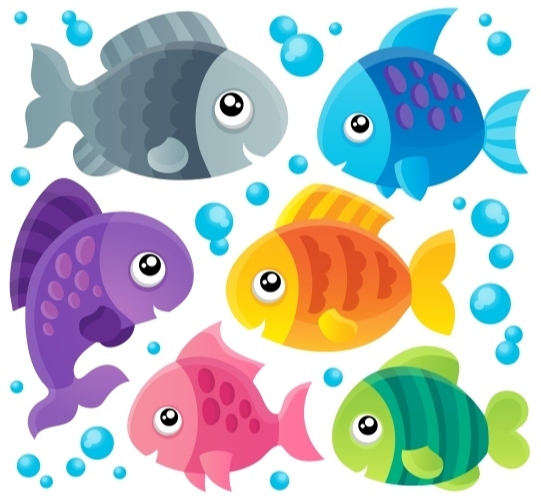
- Red Light, Green Light
This game practices kicking and works your child’s legs. Have your child hold onto a kickboard or noodle for support. When you say “green light” they should kick as hard and fast as possible. “Yellow light” means kick slowly, trying not to splash and “red light” means stop kicking. Have fun mixing up the order as you call out directions. You can even take turns being in charge and do some kicking yourself. - Catch the Fish
Ready to focus on arms? Have your child sit on the steps. Tell them that they need to try and pretend to catch a fish by keeping their hands cupped, reaching out in front of them, and pulling their arms back. You can sing a short song, like “Row, row, row your boat”. When the song ends, ask how many fish they caught and tell them to throw the fish back by making a big splash. - Motorboat Float
Playing motorboat helps prepare your child for the horizontal position they will use when swimming. Hold your child securely under their arms. Walk backwards, so they naturally move into a forward facing float. Slowly start spinning in a circle while saying “Motorboat, motorboat, go so slow”. Increase your spinning speed and say “Motorboat, motorboat, go so fast”. Then tell your child to kick as you spin and say “Motorboat, motorboat step on the gas!” Once your child is used to the game, encourage them to put their arms around your neck, to better mimic a natural swimming position. - Talk to the Fishies
This activity prepares your child for putting their face in the water and turning to breathe. Start with your child sitting on the steps or standing in the water where they can touch the bottom. Have your child talk to the “fishies” or “mermaids” or whatever sea creature they like by blowing bubbles into the water. Then have them turn their head and put their ear in the water to hear the response. - Ring Around the Rosie
Get some additional underwater practice by playing this game. You can even add additional swimmers to this one. Place everyone in the shallow end and have them stand in a circle, holding hands. Sing ‘Ring Around the Rosie’ and walk in a circle. At “We all fall down” everyone should bend their knees and go underwater. As your little one gains confidence, you can have everyone let go and briefly sit on the bottom of the pool before popping back up. - Superman
Teach your child how to push off the wall by pretending to be Superman. Tell your child bend their knees and push off the wall with their feet gliding with their arms extended to fly to you, just like Superman. Stand nearby and gradually move backward so they need to glide farther as the game goes on. Over time, you can ask your child to kick after pushing off so they can go even further. - Treasure Hunt
When your child is a good swimmer, you can move on to swimming underwater and diving. Place diving sticks and rings around the pool. Time your child to see how fast they can collect the items and bring them back to you. You can even buy underwater weighted hula hoops to make the game more challenging. As they get better, give them less time to grab all of the objects or hide them in deeper section of the pool so they need to dive for them.
Don’t forget to always have an adult closely supervising swim time, ideally someone who knows CPR, and to follow other drowning prevention tips to keep your child safe. When you aren’t practicing how to swim, your child should be wearing a Coast Guard approved life jacket, not floaties or water wings that can pop or be slid off. The right precautions will keep your child safe.
Learning how to swim is an important lesson for all children. Plus it’s exciting, your child gets to become more independent and can play more games in the pool. Start teaching your child today!
References
- American Academy of Pediatrics. (2019). Drowning Prevention for Curious Toddlers: What Parents Need to Know. Healthy Children. Retrieved from https://bit.ly/1HUX14H
- American Academy of Pediatrics. (2019). Swim Lessons: When to Start & What Parents Should Know. Retrieved fromhttps://bit.ly/2YFTmlY
- American Academy of Pediatrics. (2018). Swim Safety Tips from the American Academy of Pediatrics. Retrieved from https://bit.ly/2IDAufy
Medical Disclaimer: The information provided on this site, including text, graphics, images and other material, are for informational purposes only and are not intended to substitute for professional medical advice, diagnosis or treatment. Always seek the advice of your physician or other healthcare professional with any questions or concerns you may have regarding your condition.








 France
France Australia
Australia